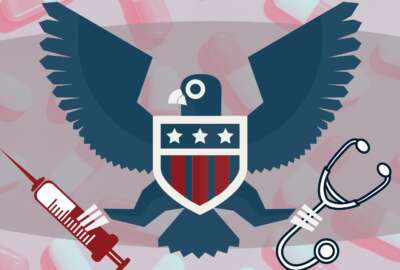3 reasons to review FEHB, PSHB plan options before Open Season ends
With just about a week remaining in Open Season, there are a few key reasons federal enrollees may want to pay even more attention than usual.
Every Open Season, the Office of Personnel Management encourages all federal employees and annuitants to review their health care and consider different enrollment options for the coming plan year of the Federal Employees Health Benefits program.
Usually, just about 5% of feds end up making changes during Open Season each year. But during what’s left of this fall’s open enrollment period, OPM and federal benefits experts have said there are a few key reasons feds may want to pay even more attention than usual.
“During Open Season, we want to give enrollees the opportunity to review their coverage, compare coverage options and make the choice that is right for them — whether that may be to make changes or keep their current coverage,” OPM Acting Director Rob Shriver said. “This year, we’re proud to offer expanded benefits, including enhanced fertility coverage, behavioral health services and new resources for Postal employees enrolling in the new Postal Service Health Benefits program.”
Here are three key reasons benefits experts are telling federal employees and annuitants to review all of their options during Open Season.
Enrollees’ premium rates rising sharply
Participants in the FEHB program and the new PSHB program will both see their insurance premiums rise significantly starting in plan year 2025. On average, FEHB participants will face a 13.5% premium hike, while PSHB participants will see their premiums rise by 11.1%.
It’s a much larger premium increase, on average, than what feds have seen for many years. For 2024, FEHB enrollees’ premiums rose by an average of 7.7%. And in 2024, premiums went up by 8.7%.
OPM has said the rising costs are a reflection of the overall health care marketplace. Notably, the cost of prescription drugs now accounts for one-third of the total cost of premiums in the health insurance program.
Still, federal benefits experts have said the sharply rising costs make it all the more important to take a look at all the options on the table during Open Season. The FEHB and PSHB premium increases are an average, meaning that while some plan options will rise more than usual, costs for other plan options are staying the same, and in some cases even decreasing.
Kevin Moss, a senior editor at Consumers’ Checkbook, said there are ways for many feds to find cost savings — potentially through their premiums, or by opening a Flexible Spending Account.
“Just three years ago, we were at a 3.8% premium increase — so this is much higher,” Moss said in an interview on Your Federal Life. “But an average is an average, and it doesn’t mean that all plans follow that average. Next year, for example, there are 28 plans where the premiums decreased for self-only enrollment. The premiums stayed the same in five plans. The premiums were below the 13.5% increase in 69 plans. And they were above the average in 42 plans … One thing that we always advocate is, you’ve got to shop around. There’s more than just one plan, and there’s more than just the plan that you’re currently enrolled in. Make sure that you’re considering not just premiums, but also total cost.”
Thiago Glieger, another federal benefits expert, recommended that FEHB and PSHB participants look at various plan brochures to find more details on various costs, as well as different coverage options — and then look at how to strike the best balance between the two factors.
“Generally speaking, the coverage is going to be commensurate with the price. But a higher priced plan does not always necessarily mean that it’s a better quality plan,” Glieger said in an interview on Your Federal Life. “Some of the plans will have a higher deductible, but they have no co-pays. Other plans will have a co-pay, but maybe that’s a lower deductible. So you have to see which one may work out better for you, depending on what you’re looking for.”
Details of Medicare Part D plans
Federal and Postal annuitants may also want to pay particular attention to the coming changes in OPM’s insurance programs for plan year 2025. In just the last couple of years, Medicare’s integration into the FEHB has changed significantly for federal enrollees.
All FEHB carriers are now required to provide prescription drug coverage that’s as good or better than what annuitants would receive in Medicare Part D through an external provider. For FEHB annuitants, that makes a Medicare Part D Employer Group Waiver Plan a better option in virtually all cases, federal benefits experts have said.
Due to several changes stemming from the Inflation Reduction Act, annuitants will also see limits in the cost increases that can occur in Medicare.
On top of that, FEHB participants will get access to a GLP-1 drug through the FEHB program for obesity treatments — something that’s available through FEHB plans, but not necessarily through other Medicare providers.
All Medicare-eligible PSHB and FEHB annuitants will be automatically enrolled into a Part D prescription drug plan, OPM said. But for the Postal program, Medicare will look notably different for one key reason: Any PSHB annuitant who opts out of a Medicare Part D plan will lose underlying coverage through their PSHB plan as well.
In virtually all cases, OPM said annuitants will be better off retaining their Part D coverage and not opting out of the benefits. OPM said it expects “very few” USPS annuitants and their family members to opt out of Medicare Part D.
IVF coverage expanding
Federal employees looking to start or grow their families will see more options for getting fertility benefits in plan year 2025.
For the next plan year, two nationwide plans — Blue Cross Blue Shield and GEHA — are both offering a $25,000 benefit to go toward the costs of in vitro fertilization. The benefit comes on top of OPM’s base requirements for carriers to cover artificial insemination procedures as well as three rounds of IVF medications annually.
Blue Cross Blue Shield began offering the $25,000 IVF benefit for the 2024 plan year. GEHA’s coverage will be new for plan year 2025. The addition of a second nationwide plan option means feds who are looking for more comprehensive IVF benefits now have a choice in their plan.
Additionally, for plan year 2025, 45 plan options across 25 FEHB plans will be offering fertility benefits above OPM’s standard requirements for carriers. The options are available to both FEHB and PSHB enrollees.
Access to fertility treatments appears to be especially important for younger generations of federal employees, and may have influence over their recruitment and retention, according to the results of OPM’s latest Federal Employee Benefits Survey.
Open Season for the 2025 plan year began on Nov. 11. FEHB and PSHB participants have until Dec. 9 to review and make changes to their health care choices for the coming plan year.
Copyright © 2025 Federal News Network. All rights reserved. This website is not intended for users located within the European Economic Area.
Drew Friedman is a workforce, pay and benefits reporter for Federal News Network.
Follow @dfriedmanWFED






